8. Foams, gels and the colloidal glass transition
Types of foam
Spherical foams:
It has more continuous phase
Example shaving foam
Polyhedrical foams:
It has thin continuous phase
Example beer foam
Spherical foams might transfer to polyhedrical
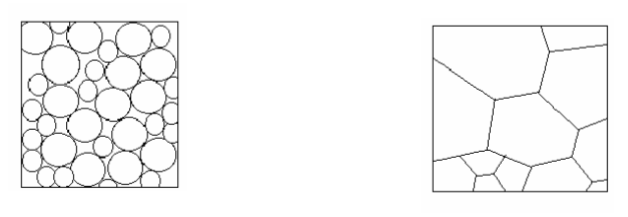
Transient foams:
A foam that is not stable tends to collapse quickly
Examples: detergents, beer, champagne
Stable foams
A foam that is stable doesn’t tend to collapse quickly
Examples: styrofoam, bread etc. (since continuous phase is a solid)
Foams
• Associative liquids → interface with air → needs stabilization by surface active molecules
• Surface costs energy! (high surface energy)
• Gas is hydrophobic since there is low inter-molecular interaction
• Pure liquids do not foam
• Creation of foams
– Whipping/vigorous stirring
– Through small pores
– In situ (gas generation)
Characterization of foams
• Overrun- how efficient it is at foaming (volume of foam/volume of liquid)

• Density (volume fraction of gas in foam) - weigh the foam
• Bubble size (easiest is microscopy)
• Yield value – solid properties of foam (how much do you have to tip foam to make it flow)
Stability of foams- The stability of foams is affected by
Draining
Coalescence
Disproportionation
Drainage- liquid between bubbles will drain because of gravity
Fast without surface film (adsorbed layer of surfactant)
Slower with surface film
Rate of drainage depends on the viscosity of the liquid phase (by increasing viscosity (adding thickening agent)→ draining rate will decrease) - for example maräng
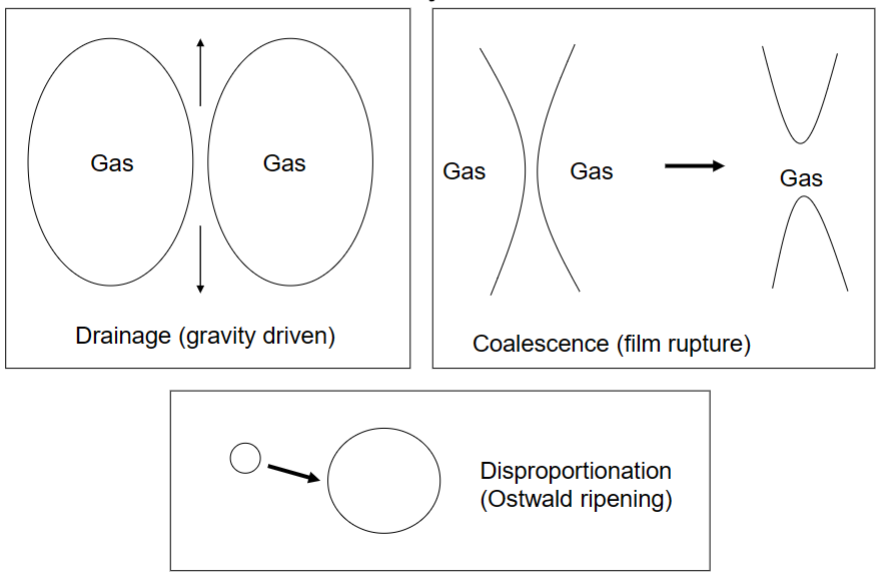
Increased curvature of small bubble → increase Laplace pressure
Coalescence
Presence of solid particles:
Penetrating particles destabilize → rupture of interface
Typically particles that are not wetted by the liquid phase
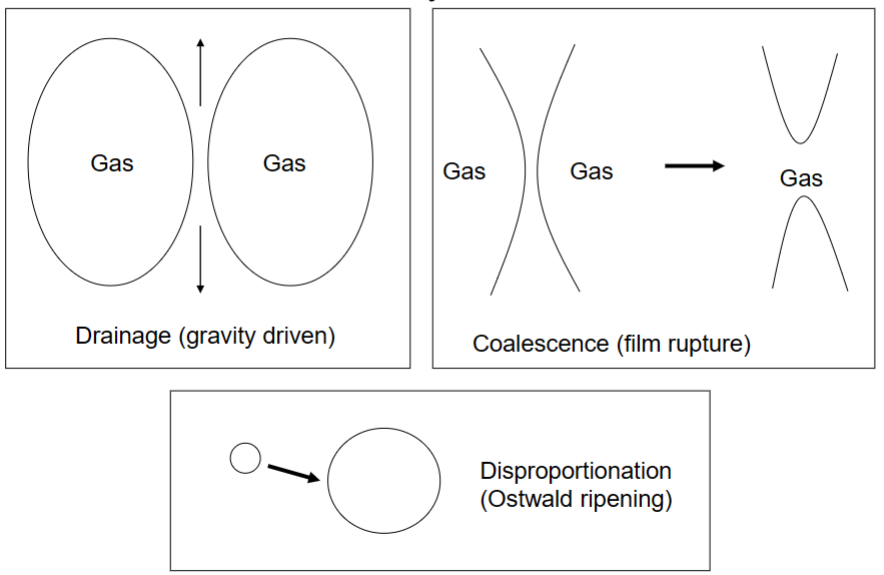
Non-penetrating particles stabilize → increase in viscosity of the liquid phase
Presence of spreading oils destabilizes aqueous interfaces:
Spreading along the interface occurs if: γwater/air > γoil/water + γoil/air
Air/water interface collapses
Thick adsorbed layers are more stabilizing → more resistant to deformation.
Large bubbles are less stable against coalescence → more easily deformed
Disproportionation (Ostwald ripening)
Small bubbles “disappear” and large bubbles grow
Driven by the Laplace pressure.
Individual gas molecules dissolve from small bubbles and diffuse to large bubbles.


R=bubble radius
s=solubility of gas
γ=surface tension
A=area of film (per volume gas phase)
Henry’s law:
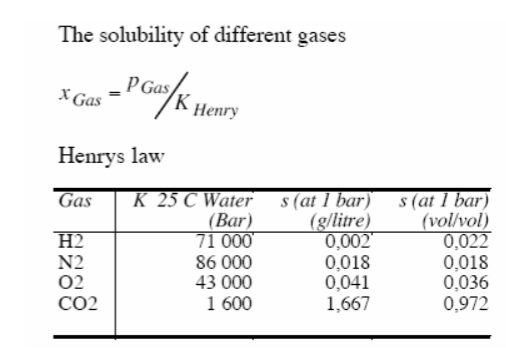
Higher K → lower solubility x
Flow behaviour
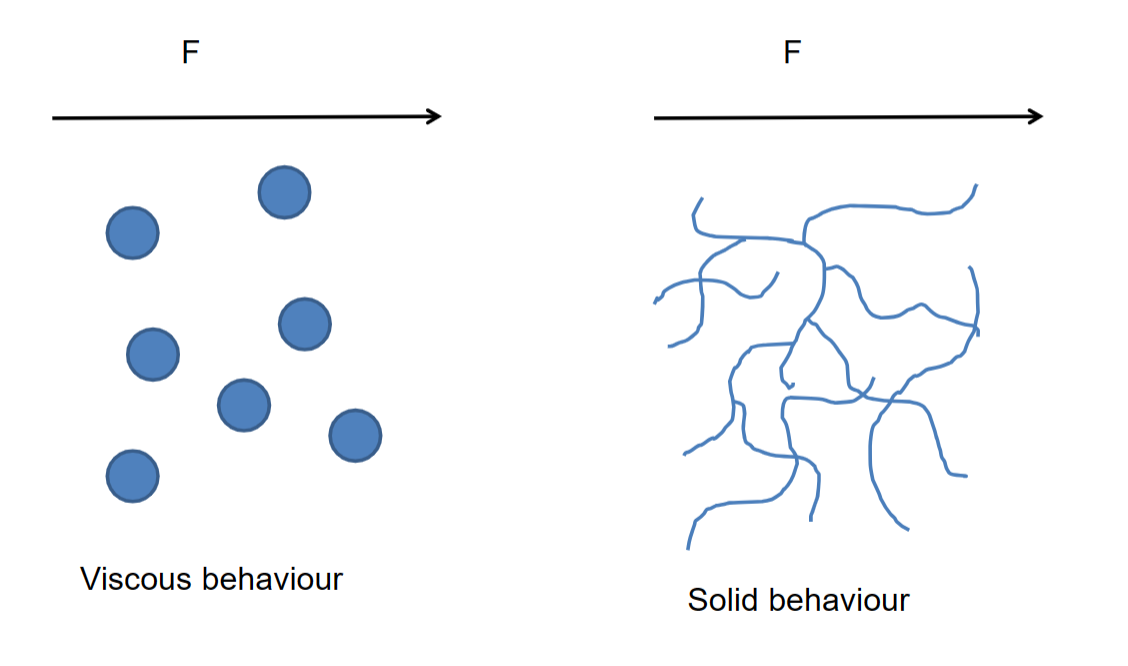
Gel formation
• A gel is a system with a considerable yield value (overcome yield value → to make it flow)
• Requires a continuous 3D-network of polymers or particles

Yield stress
• Above the yield stress the system flows.
• Below the yield stress the system appears solid (i.e. gel)

Viscous flow can be very low
• Relaxation from one state to another can be very slow
– The time for observing viscous flow can be very long
– Very viscous ”liquids” can appear solid (depending on how long observe it)
Types of gels
• Particle gels
• Polymer gels
– Covalently linked
– Linked through physical interaction
• Ion bridges
• Hydrophobic interaction
• Partial crystallization
• Helix formation
• Lamellar structures of surfactants and lipids (cosmetic products like creams → incorporates into the skin)
Gel formation in polymer solutions
Viscoelasticity
• Oscillatory deformation with rheometer
• Particle tracking (lower diffusion→ higher viscosity) - microscopic technique
G’= ”in phase” shear modulus = storage modulus = elastic response=”solid-like” contribution.
G’’=”out of phase” shear modulus = loss modulus = viscous response=”liquid-like” contribution.

Transitions between liquid-like and solid-like flow behaviour in colloids
• Pronounced elasticity
• Concentrated (high volume fraction) or strongly interacting dispersions
• Emulsions
• Polymeric or particle gels
• Absence of thermodynamical equilibrium (meta-stable)
• Arrested states (often described as)
Molecular and colloidal glasses
Molecular glass: If we increase temperature, it becomes more mobile
Colloidal glass: Doesn’t depend on temperature
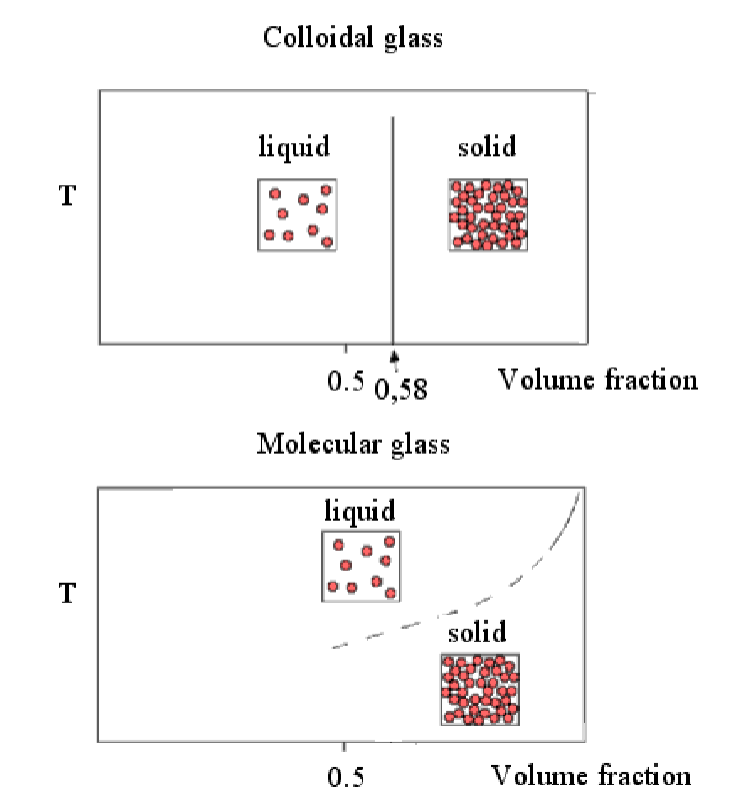
Colloidal glasses- It is formed when colloidal particles are densely packed in a suspension to the point where they form a disordered, amorphous solid-like structure.
Transition occurs at different volume fractions depending on:
• Attractive interaction → attractive glasses
• Repulsive interaction → repulsive glasses
Repulsion: are forced together even though there is repulsion between them

Attraction: occurs at a much lower volume fraction since it flocculates
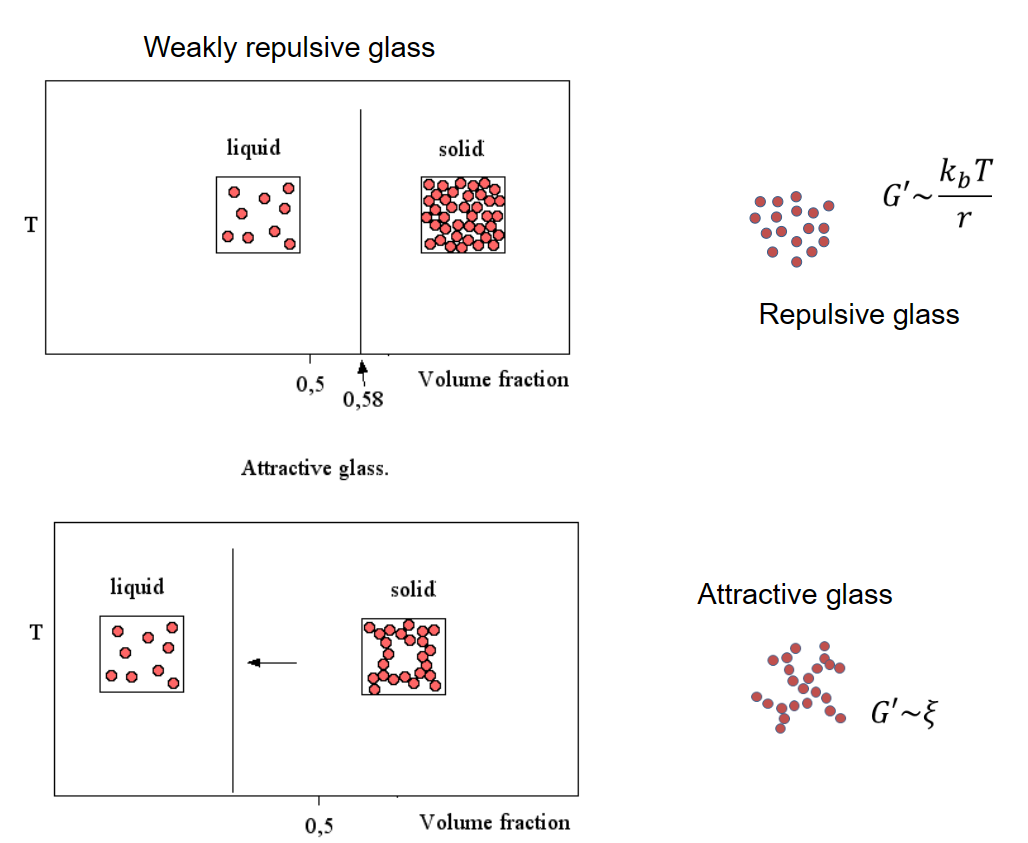
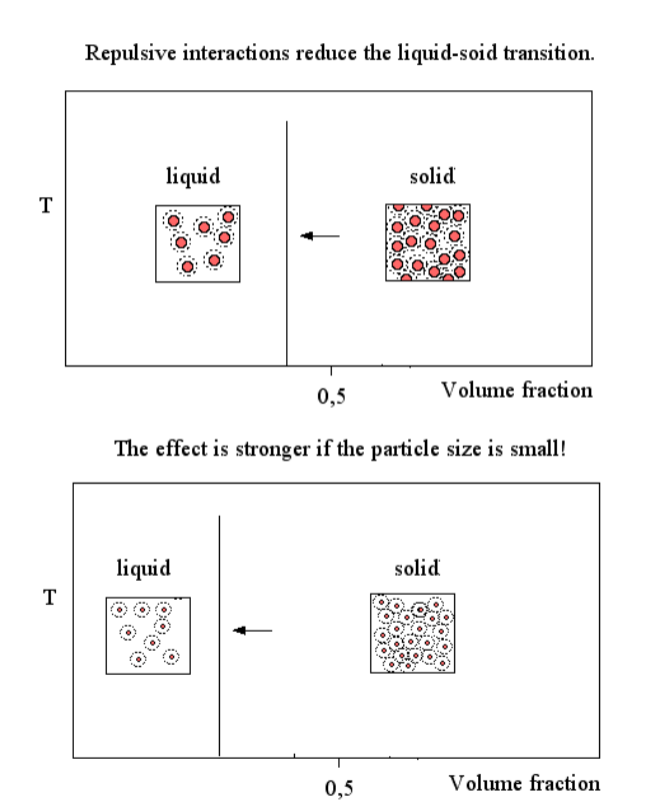
The one top, takes up more space, they can’t get closer than that
Effect of particle size on viscosity and glass transition
Infinite viscosity means solid behaviour
Long range repulsion
The surface area is much larger for smaller particles than for larger ones
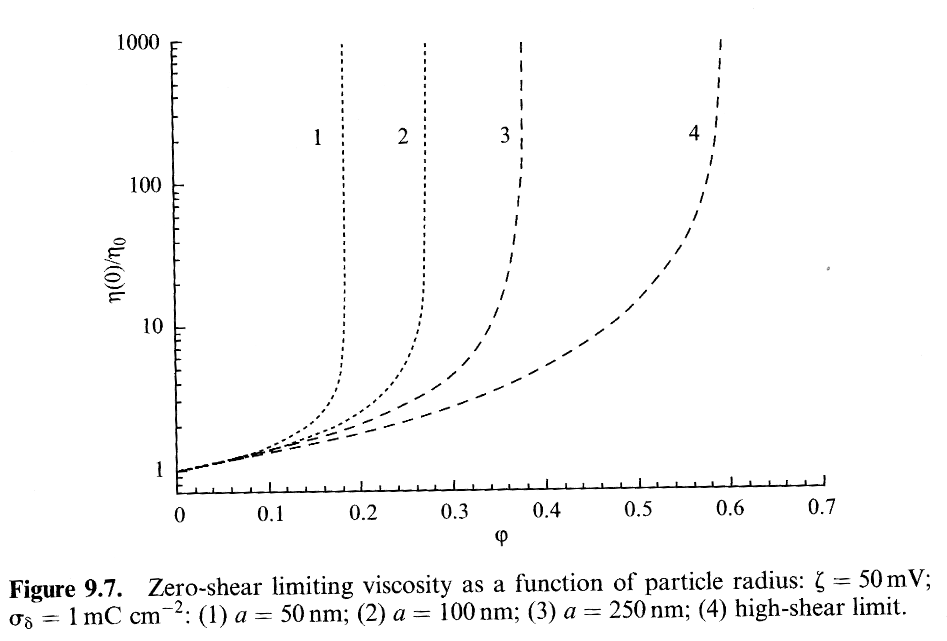
Colloidal glasses
• Non-equilibrium
• For repulsive glasses:
• ”Cage effect” - one particle is caged by other particles
• φg≈0.58
• For attractive glasses:
• Transition occurs at lower φ
Guinness (foam):
Since it smooth and coherent foam → repulsive forces
φg≈0.58
d≈150 nm → smaller makes it more creamy
N2 is much lower solubility in water compared to CO2 - the foam is more stable against Ostwald ripening
Dapier (gel):
Cross-linked polymer
Water is absorbed onto negatively cross-linked polymer and forms layer of counter ions → drives surfaces apart (electrostatic repulsion)
CaCl2 makes the diaper to drip. Increasing valence of ion → smaller layer of counter ions → surface can come closer to each other. Not sufficient electrostatic repulsion →

